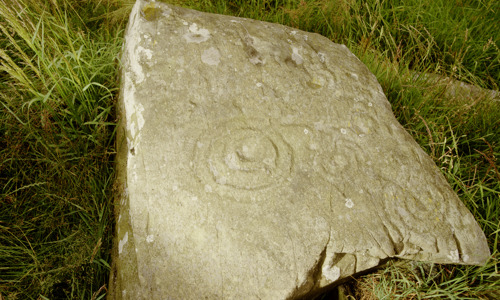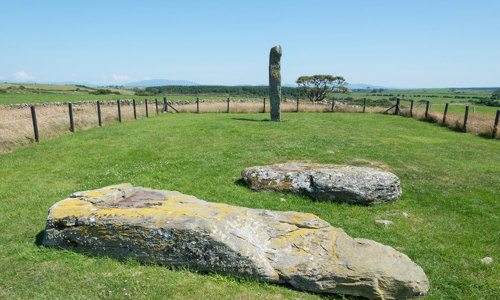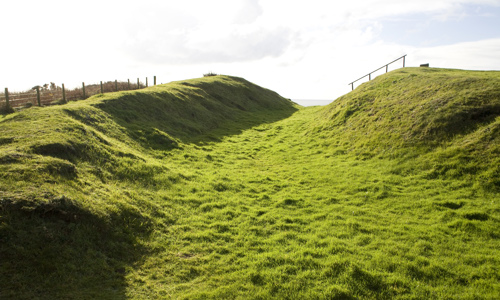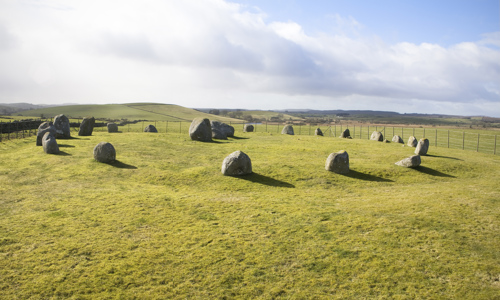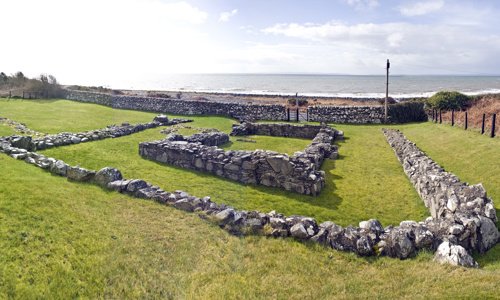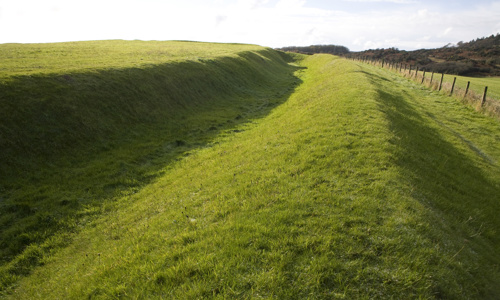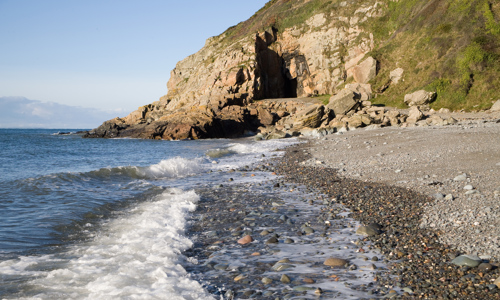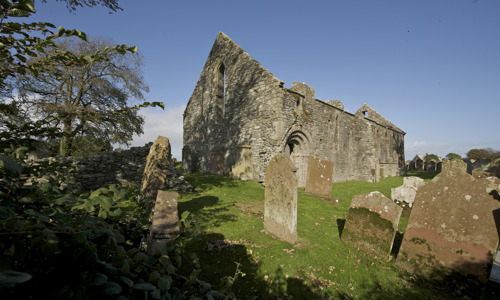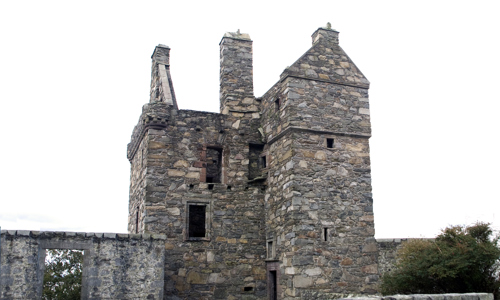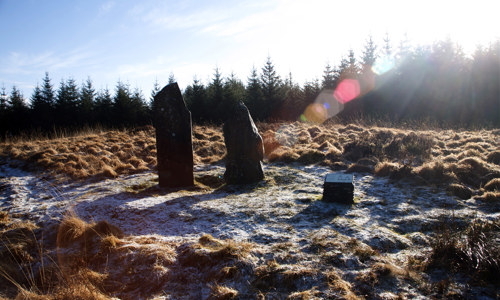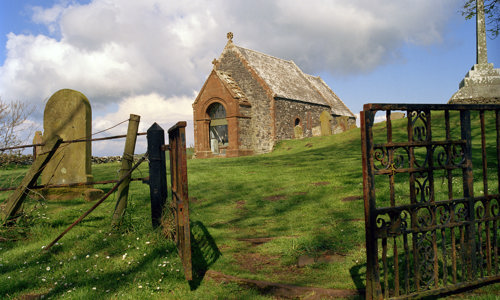History
Fortress of earth and timber
Druchtag Motte today consists of just a tall, steep mound and associated ditch, but it was once the site of a formidable timber stronghold.
Mottes are a kind of medieval earthwork castle, built both for defence and as symbols of lordship. The first mottes in Scotland were built in the early 1100s, during the reign of David I (1124–53). This type of residence and defence was largely replaced by stone castles from the 1200s on.
Druchtag would have been built almost entirely from earthwork and timber. Today we can still clearly see its steep, 6.5m high mound and a 2m deep ditch.
Atop the motte’s flat summit, the castle would have featured:
-
the lord’s timber residence
-
an enclosing timber palisade around the edge
-
a less well-defended bailey, where a hall, kitchen and chapel would have stood
There are no remains of an approach or bailey, but mottes rarely stood in isolation. Some kind of surrounding outer enclosure containing service buildings such as a hall, kitchen and chapel would probably have existed in the area close to the motte.
Who lived here?
Little is known of Druchtag’s history. We don’t know who built the motte, or when. It’s never been excavated, and there are no records about who held the land in the 1100s. However, it was probably built during the transition of the ancient independent ‘kingdom’ of Galloway into part of the medieval kingdom of Scotland – an important period in the region’s history.
Quite a few earthwork castles were built in Galloway in the 1100s and 1200s, by both the Lords of Galloway and the Scottish Crown.
The builder may have been from a different part of Scotland, brought in by the Scottish Crown to help bring the local lords of Galloway to order.
However, it’s more likely the castle was built by a local lord. Records show that the local lords built castles in this style in the later 1100s, having evicted the incomers from the region.
Most motte castles were abandoned by or during the Wars of Independence from about 1296 and never reoccupied.


